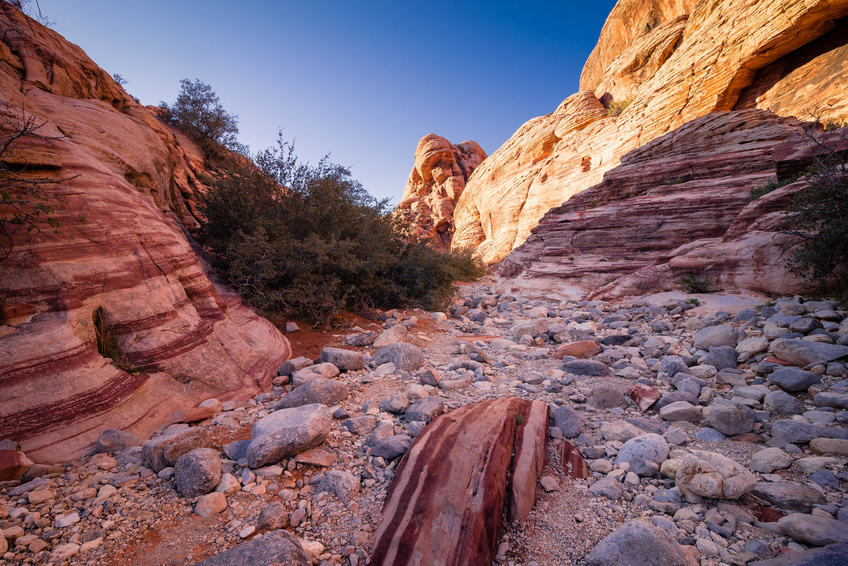
You should always bring a surplus of water to stay hydrated. Red Rock Canyon is located in the Mojave Desert, and even if it is not scorching hot, the air is still very dry. Keep this in mind when planning for your climbs, not only as a time constraint but also in terms of water. Many routes in Red Rock Canyon require significant walking, hiking and scrambling to reach them. Red Rock Canyon offers hundreds of established sport and traditional climbs, from Grade I (1-2 hours) to Grade VI (spending 2 or more nights on the route). If you are not familiar with this rating system or are unsure of what level you and your abilities fit in, be sure to choose your first ascents in Red Rock Canyon with care.

All class V routes (those involving the use of protection) in Red Rock Canyon range from 5.0 (easiest) to 5.14 (most difficult.) These ratings are based on the skills, abilities and opinions of those climbers that have ascended each specific route. Routes in Red Rock Canyon are rated via the Yosemite Decimal System. We suggest waiting 24 to 48 hours after major rains or snow to allow the rock to dry sufficiently for climbing. Because of its friable (crumbly) nature it must be approached with a greater degree of caution than a more dependable rock such as granite. Keep in mind however, it is still sandstone. The black or varnished rock is generally considered to be the hardest. The rock of the main escarpment possesses a greater cementing factor and is considered to be a good quality sandstone. The rock at Calico’s 1 & 2, and Sandstone Quarry are the focus of sport climbing. The main type of rock found in Red Rock Canyon here is Aztec (or Navajo) sandstone, formed years ago through the natural cementing of ancient sand dunes. Allow for space between parties above and below you on the wall.



 0 kommentar(er)
0 kommentar(er)
